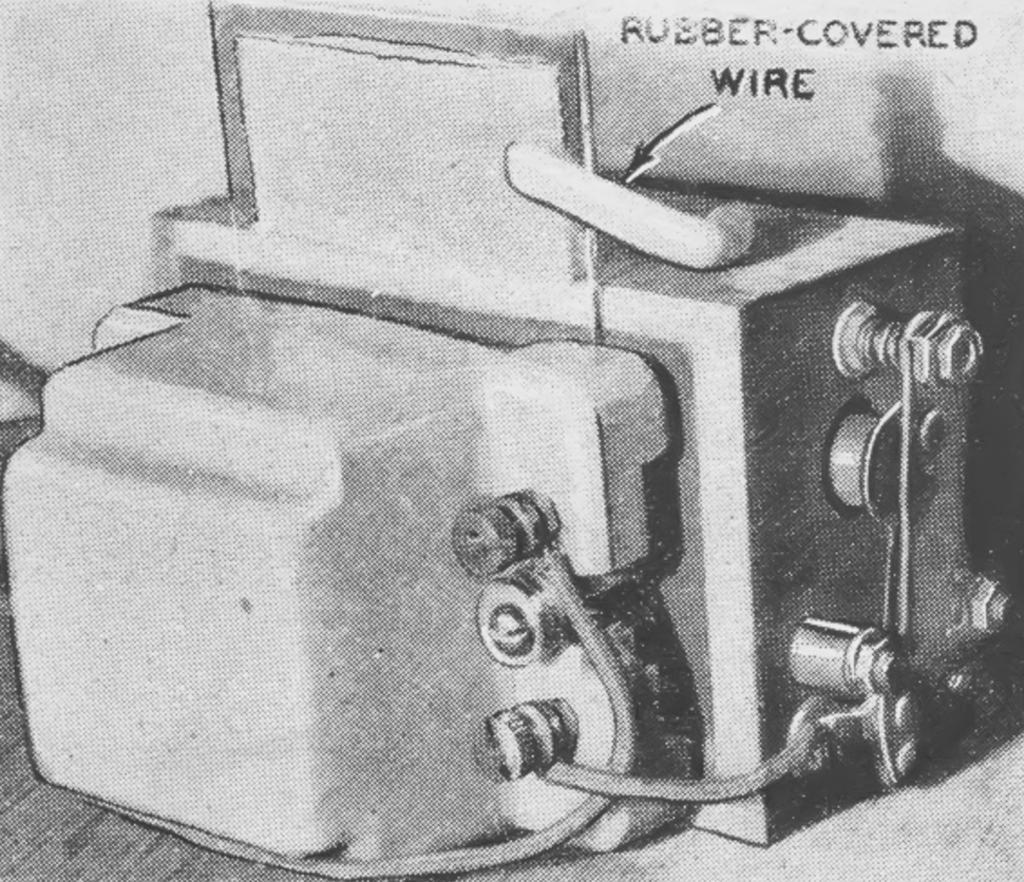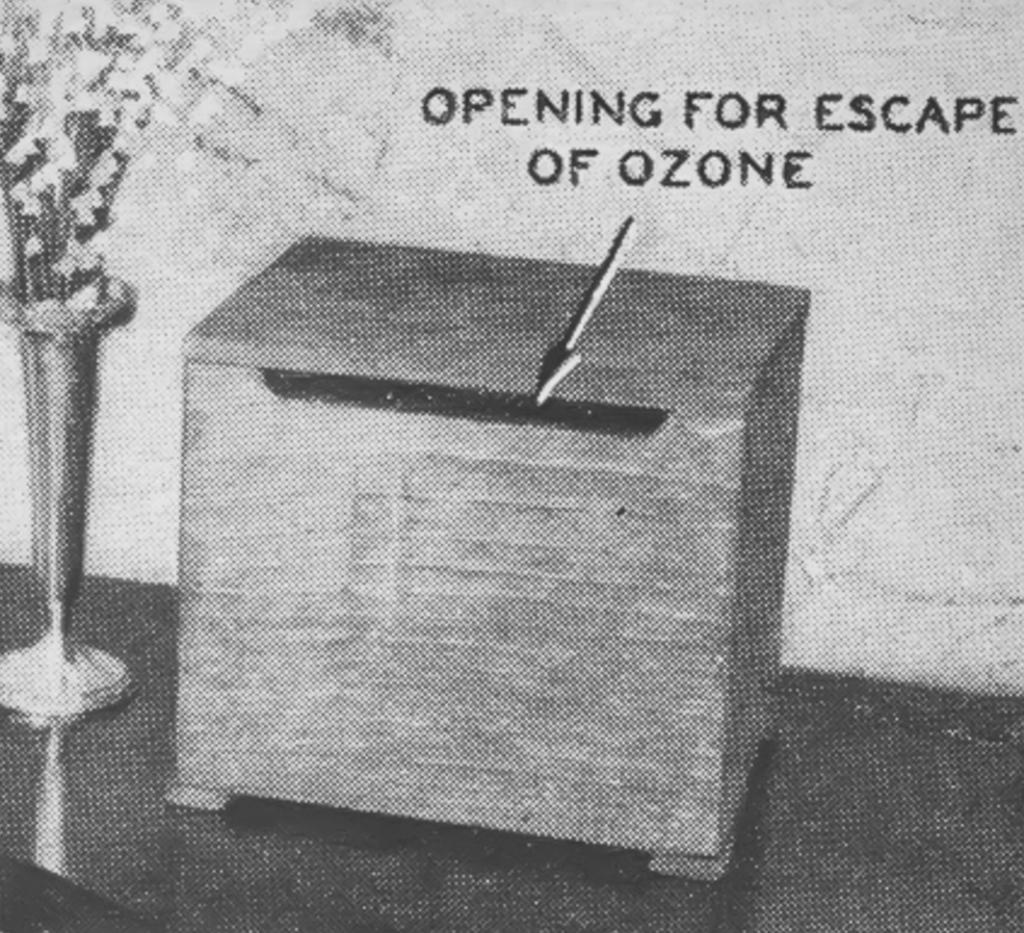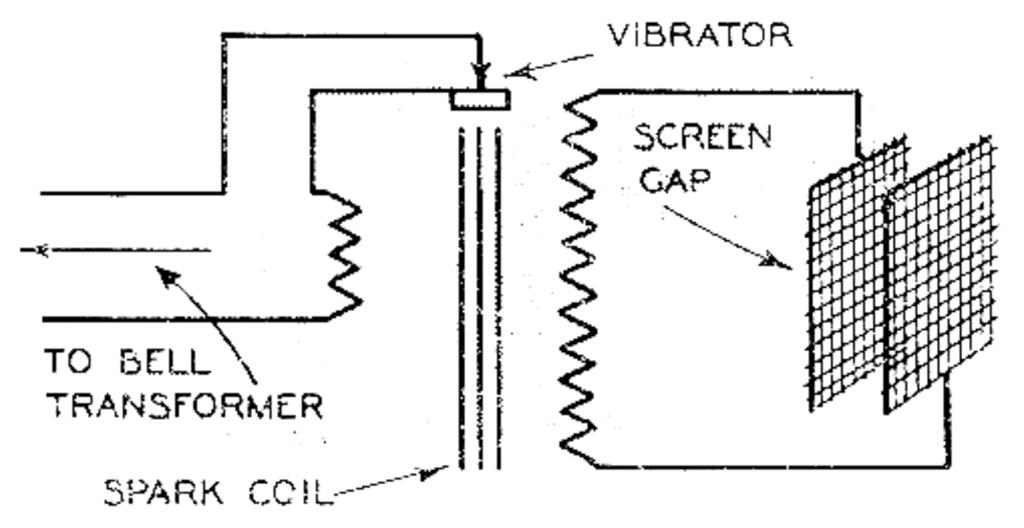TCBA Volume 6 - Issue 1
Page 11 of 18
Making an Ozone Generator
continue
Fresh air is supplied to order by this simple device which generates ozone at a turn of the button. Ozone kills undesirable odors and eliminates stuffiness within closed rooms inside the house.
“Why do you use wire screen for the spark gap?” Adams asked, as Davis removed the top of the generator.
“So that a greater sparking surface is presented to the air, developing a larger volume of ozone,” Davis explained. “The screens do not form a real spark gap such as you probably visualize, but when the coil is in operation there is a hazy bluish-violet discharge between the two sheets of screen, apparently passing through the glass insulator.”
“How do you connect the transformer, coil and spark gap?”
“Oh, that's simple. Here, I'll draw a diagram of the circuit. You see, the Ford coil primary winding is connected to the two terminals of the bell transformer; that is, the output terminals. One wire is soldered to the copper button in the end of the coil opposite the vibrator, and the other is connected to the vibrator support. The coil secondary buttons on top of the wooden box are connected one to each of the gap screens.
“You will see, by looking into the box, that I have screwed the door-bell transformer to the side of the spark coil box, being careful that the screws do not go through into the winding. Between the transformer and coil is a sheet of glass on which the discharge screens are mounted with shellac placed under the ends.
“That's all there is to it, except that you must be careful to keep all high-voltage parts - the spark coil secondary wires and the screen gap - to themselves, so that you will not get a shock if you handle the generator while it is in operation.”
(Editor's note: My last correspondence with Walter Burton was in 1986. He was in his 90's and still very active. This 1929 article is a sample of the many technical projects he wrote up in a career that began before the 1920's.)



